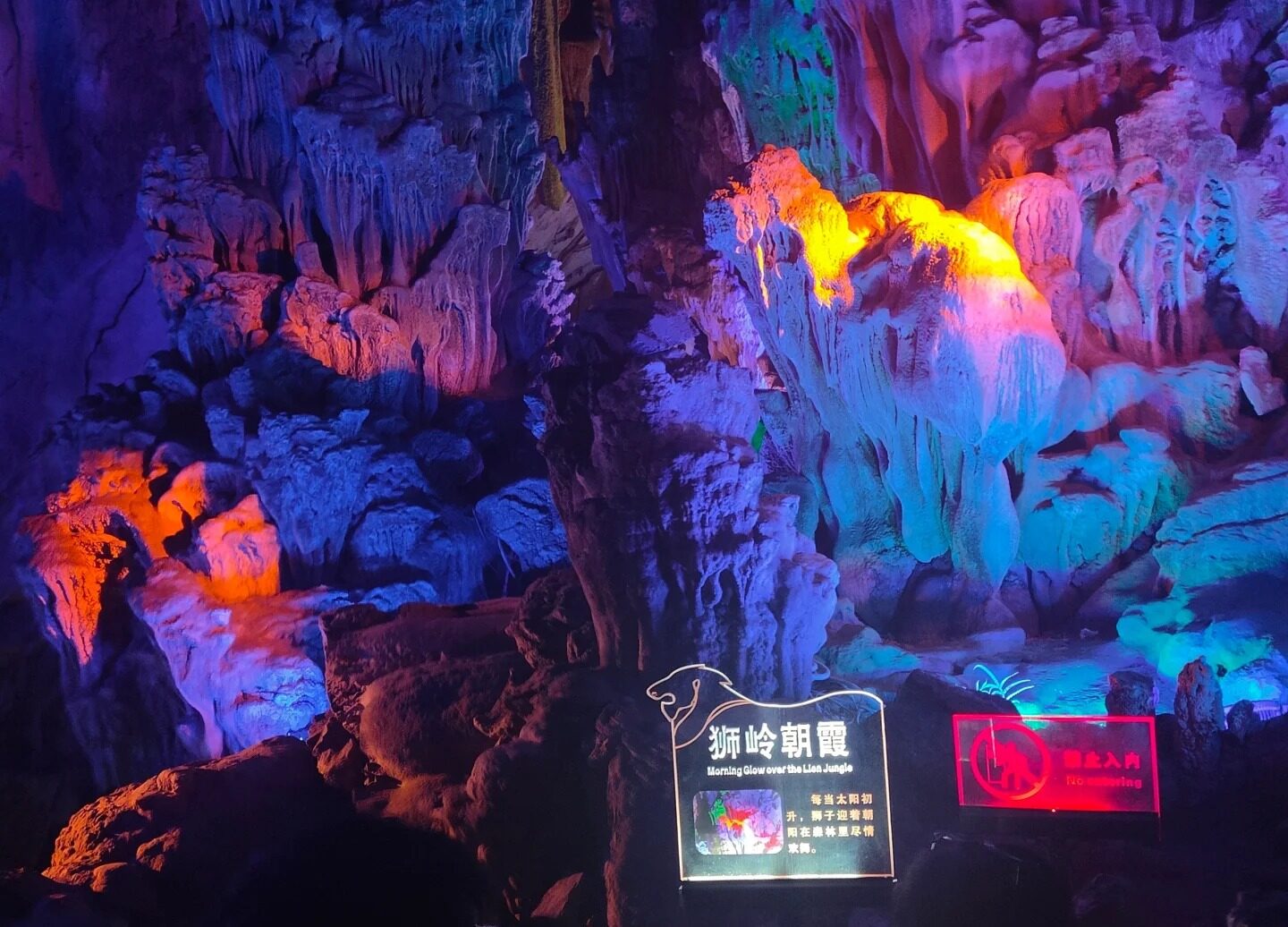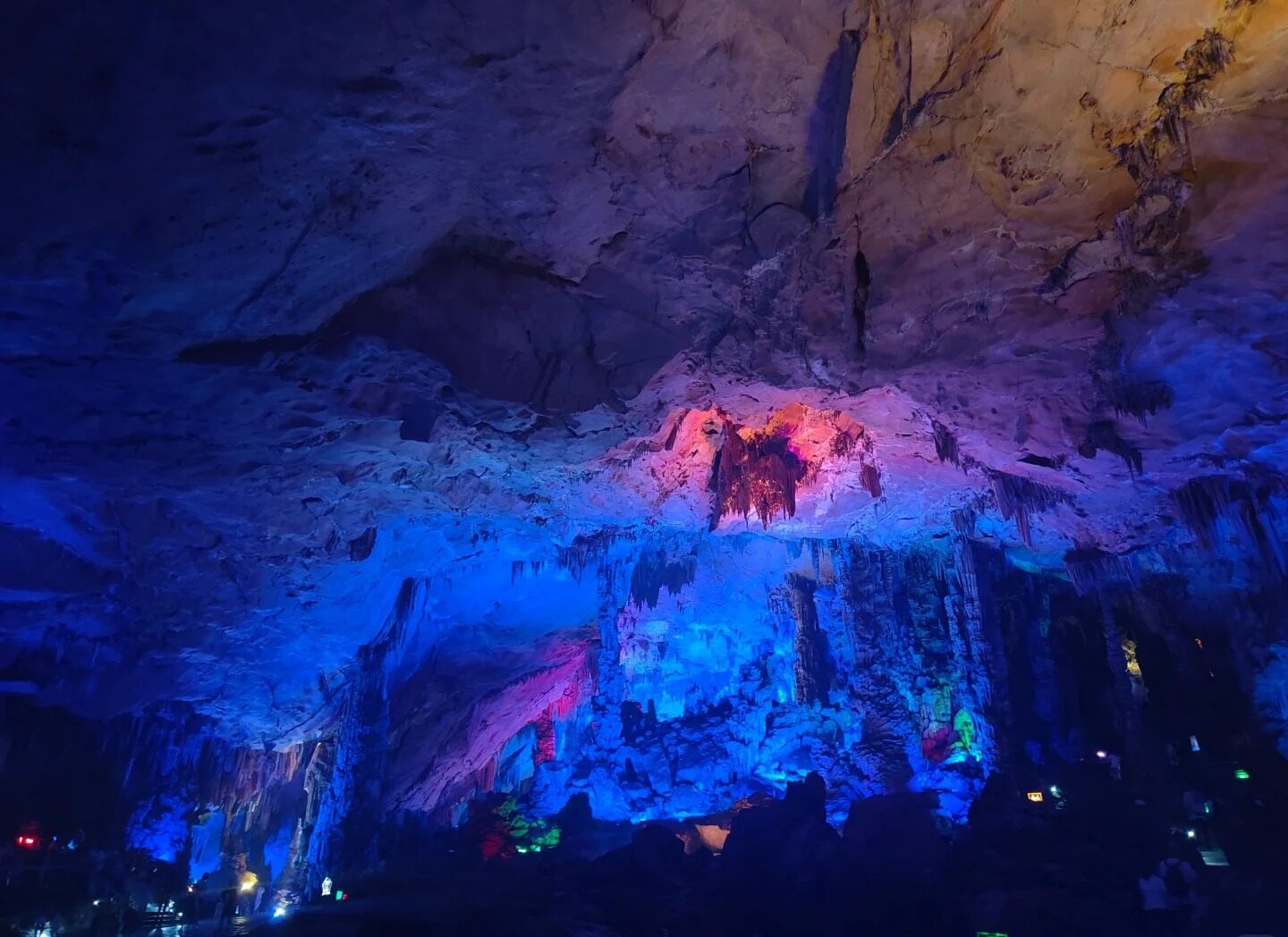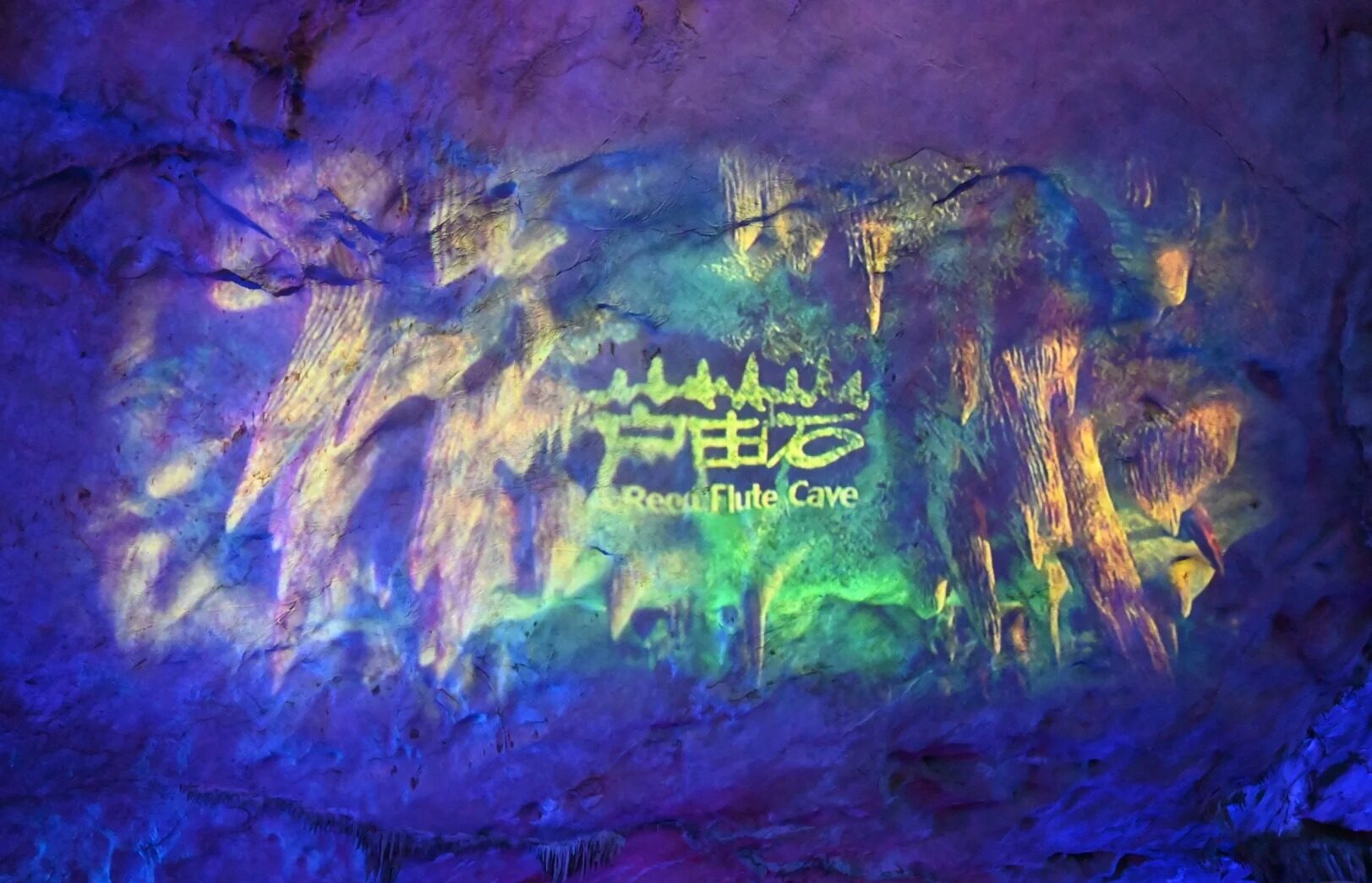Introduction to Reed Flute Cave
Nestled in the heart of Guilin, Guangxi Province, Reed Flute Cave (芦笛岩, Lúdí Yán) stands as a testament to nature’s artistry. This magnificent limestone cave, discovered over 1,200 years ago during the Tang Dynasty, has become one of China’s most enchanting natural wonders.
Known locally as the “Palace of Natural Arts,” Reed Flute Cave stretches for about 240 meters, offering visitors a subterranean journey through millennia of geological history. Its name derives from the reeds growing outside the cave, which can be crafted into melodious flutes.
Since its rediscovery in the 1940s, Reed Flute Cave has captivated millions of visitors, cementing its place as a crown jewel in Guilin’s tourism landscape and a symbol of China’s natural beauty.

Geological Formation and Natural Beauty
Reed Flute Cave’s story began over 180 million years ago. Formed through the slow, patient work of water eroding limestone, the cave showcases nature’s sculptural prowess in its myriad of stalactites, stalagmites, and stone pillars.
The cave’s interior is a wonderland of karst formations, each telling a silent tale of geological time. Water continues to shape the cave, with each droplet contributing to the ongoing creation of these stone masterpieces.
Illumination and Light Show
The natural beauty of Reed Flute Cave is dramatically enhanced by a sophisticated lighting system. Multicolored lights transform the cave into a kaleidoscopic wonderland, bringing the stone formations to life in a dazzling display.
A carefully choreographed sound and light show guides visitors through the cave, highlighting key formations and creating an immersive experience. The play of light on water and stone creates ethereal scenes, turning the cave into a subterranean theatrical performance.

Notable Formations and Chambers
Reed Flute Cave boasts several renowned chambers and formations, each with its own unique charm:
| Formation Name | Description |
|---|---|
| Crystal Palace of the Dragon King | A vast chamber with intricate formations resembling a royal court |
| Virgin Forest | Stalagmites reminiscent of a petrified forest |
| Flower and Fruit Mountain | Rock formations resembling a bountiful orchard |
Other notable sights include “Pines in the Snow,” “Mushroom Hill,” and the “Red Curtain,” each named for their striking resemblance to these earthly counterparts.
Historical and Cultural Significance
The walls of Reed Flute Cave bear witness to its long history, with ink inscriptions dating back to 792 AD during the Tang Dynasty. These ancient graffiti offer glimpses into the lives of past visitors, adding a layer of human history to the cave’s natural narrative.
During World War II, the cave served as a refuge for locals seeking shelter from air raids, demonstrating its importance beyond mere natural beauty.
In Chinese art and literature, Reed Flute Cave has inspired countless works, its otherworldly beauty captured in paintings, poems, and stories throughout the centuries.

Visiting Reed Flute Cave
The best time to visit is during Guilin’s mild seasons – spring (March to May) and autumn (September to November). A typical tour lasts about an hour, guiding visitors through the cave’s highlight.
Guided tours are mandatory and available in several languages. These knowledgeable guides bring the cave to life with stories and explanations of the formations.
Photography is allowed, but tripods are typically prohibited. The cave’s lighting creates unique photographic opportunities, so be prepared to adjust your camera settings for low-light conditions.

Practical Information for Travelers
To reach Reed Flute Cave:
- Take bus 3 or 58 from Guilin city center (approximately 30 minutes)
- A taxi ride takes about 20 minutes from downtown Guilin
Essential details:
- Entrance Fee: Approximately 120 CNY (subject to change)
- Opening Hours: 8:00 AM to 5:30 PM daily
- Accessibility: The main path is wheelchair accessible, but some areas may be challenging
Nearby attractions include Seven Star Park and the Guilin Art Museum. For accommodation, consider hotels in downtown Guilin for easy access to multiple attractions.
Reed Flute Cave offers a mesmerizing journey into the heart of the earth, where nature’s patient artistry is on full display. As you wander through its illuminated chambers, you’ll find yourself transported to a world of wonder, where stone comes alive and imagination knows no bounds. This subterranean marvel stands as a testament to both the power of natural forces and the enduring human fascination with the mysterious world beneath our feet.





